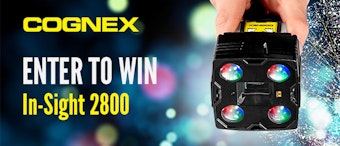Automation system integrators often provide a key business benefit besides delivering a specific solution or project to their customers. They often also inject innovation into their client’s automation applications and business processes by being a knowledge broker.
A classic example of a knowledge broker is Design Continuum, an international design and engineering firm with U.S. operations in West Newton, Mass., whose methods are documented in Andrew Hargadon’s book, “How Breakthroughs Happen: The Surprising Truth About How Companies Innovate.”
In 1988, Design Continuum was asked to develop a response to Nike’s new “Air” technology, a heel cushion and “active energy return system.” The company created the “Pump,” a design that produced a form-fitting shoe by incorporating an inflatable air bladder into the sides of an athletic shoe. The new design came about because one of Design Continuum’s engineers had previously designed an inflatable splint for another client. Another member of the design team had also previously worked on intravenous bags and valves for a medical equipment supplier, and saw how these small sealed bags could be modified to help create the Pump.
The rest is history. The Pump in its first year accounted for $1 billion in revenue for Reebok. As in this product design example, automation system integrators often act as knowledge brokers, sharing knowledge gained from working for clients in multiple industries and multiple business functions. Automation system integrators are often exposed to automation technologies in one industry that are potentially valuable in another market. Often, these system integrators are putting old things in new combinations and new things in old combinations.
From control to test
For instance, Bloomy Controls, a Windsor, Conn., integrator, has bridged this gap. On the one hand, Bloomy Controls has extensive experience with feedback control systems for the process industries. It has deployed Austin, Texas-based National Instruments’ LabView RT and CompactFieldPoint products in power plant and fuel cell control systems, chemical reactors, industrial heaters, and more. On the other hand, Bloomy has extensive experience developing automated test equipment for the communications industry, including optical network components using LabView and a combination of traditional and modular instruments.
Recently, Bloomy Controls borrowed from its process control experience to create a radio test system. Precise control of radio frequency (RT) power is required to make receiver measurements, including Intermediate and Image Frequency Rejection, and various sensitivities such as -3dB Limiting sensitivity, Usable Sensitivity, and Seek/Stop Sensitivity. Drawing on experience with industrial feedback control systems, it was able to implement Proportional-Integral-Derivitive (PID) control algorithms to optimize the performance of the RF power control loops, and maximize the throughput of the radio test system.
相反,集成商可以从测试experience into control applications. A major agricultural hardware manufacturer approached VI Engineering, of Farmington Hills, Mich., regarding a seed measuring application. The customer was frustrated with the current technology using light-emitting diode (LED) sensors that was inaccurate, and a high-speed camera/recorder requiring slow play back and manual counting. VI Engineering used National Instruments’ experience with an optical fiber alignment test system and a targeting system for the National Ignition Facility to suggest an innovative solution using two line scan cameras to locate the seeds and time the sorting. The current system now measures the size, times the drop, and locates on an x-y plane seeds from corn-shaped to spherical that vary in size from 1 millimeter to 2.5 centimeters in diameter, at rates up to 200 seeds per second. The solution increased the company’s ability to accurately test its planting solutions and modify designs from a lab setting.
约翰·汉克斯,数据采集平台经理and Control, and Jack Barber, Alliance Partner Program Manager, both of National Instruments, have analyzed the data, and suggest that there is a process to the way integrators can bring extra innovation to their clients. The way these technologies become innovative solutions to clients’ problems depends on how past solutions are shared among developers within the system integrator company over time. Best practices of successful automation integrators point to their developing a process for gaining access to new automation opportunities, storing and bridging their innovations.
Hanks and Barber use this model of accessing, storing and bridging in order to describe the system integrator innovation process.
Accessing需要的条件创造的潜力or innovation. System integrators gain access by building a network of relationships and providing solutions to clients across industries and business functional areas. Successful networks include relationships with software and hardware providers, industry groups and academic experts. Building a network of relationships around an emerging technology or innovation often helps develop innovations. “Building access is a life long journey,” says Hanks.
Storing描述个人和的策略organizations for documenting their experience. Most knowledge enters the organization and resides within individuals. The knowledge has value if it can help others solve new problems.
“Creating known ‘go to’ people within an organization who are experts that can be brought in to consult on a project is a typical way system integrators create institutional memory,” says Barber. “System integration organizations use project reviews, prototypes and people to document past experiences.”
The challenge with storing knowledge is that most knowledge that can be recombined in an innovative new way resides “between people’s ears,” Hanks observes. “So if they leave the organization, the knowledge leaves with them. The owner’s or manager’s challenge is to capture this knowledge and create back-up experts.”
Bridgingis the task of linking past experiences to new problems, according to Hanks and Barber. Often, new automation innovations are the assimilation of pre-existing elements from disassociated industries into new patterns.
Hanks and Barber conclude that the process of creativity and innovation is the process of moving ideas from where they are known to where they are not. System integrators for automation often play this role. Often, the future is here, yet dispersed, and automation system integrators spread new innovations from one industry to the next.
For more information, search keywords “system integrators” at www.myenum.com.























![Mps035 Sm 1200x628 D[2]](https://img.automationworld.com/files/base/pmmi/all/image/2021/03/MPS035_SM_1200x628_D_2_.604a4a336bc60.png?auto=format%2Ccompress&bg=fff&fill-color=fff&fit=fill&h=146&pad=5&q=70&w=340)








